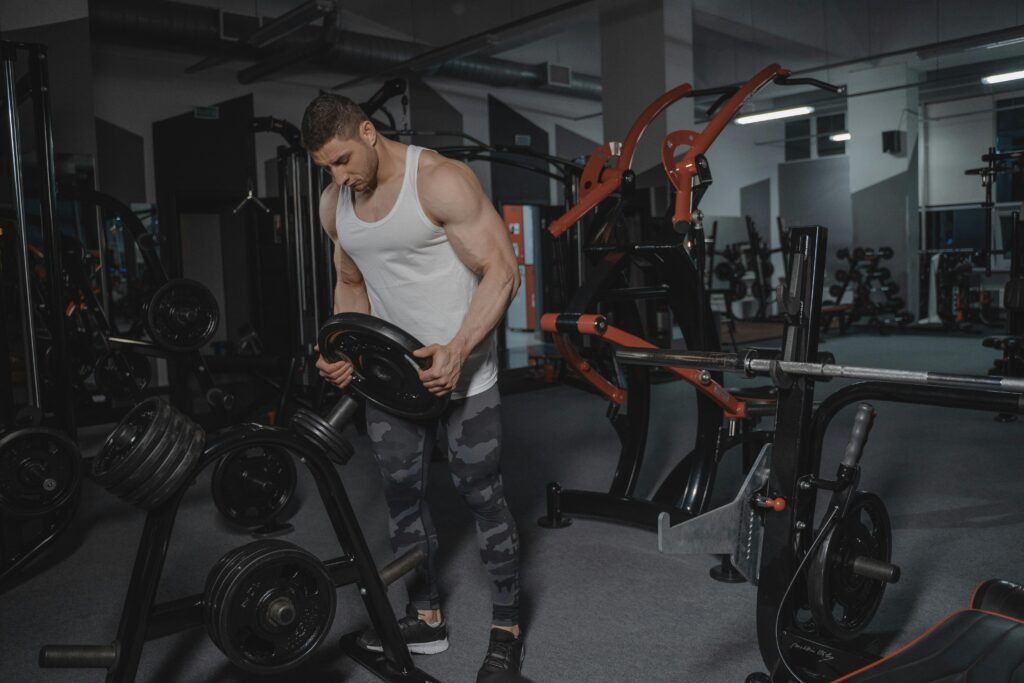Explosive Bodyweight Training for a Powerful Chest 2026 Many chess players find it hard to stay fit and focused during long games. Studies show that regular body weight training for ches can boost physical fitness and mental stamina. This blog will give you simple exercise tips and a balanced schedule to improve your strength, focus, and endurance for chess.
Keep reading to upgrade your game with strong fitness habits.
Key Takeaways
- Bodyweight training, including push-ups, planks, dips, and resistance band exercises, builds chest strength and improves endurance for chess players.
- Better physical fitness from bodyweight training can boost focus and mental stamina during long chess matches.
- A balanced schedule with 3–4 workouts per week plus rest days helps prevent burnout and supports recovery.
- Tracking progress in both fitness and chess keeps you motivated; working out with a partner adds fun to your routine.
- Strong upper body muscles help maintain good posture at the board and support sharper thinking during games.
The Benefits of Combining Bodyweight Training with Chess
Explosive Bodyweight Training for a Powerful Chest 2026 Bodyweight training boosts your fitness while sharpening your chess skills. Engaging in both activities strengthens your body and enhances your mental focus.
Improves overall physical fitness
Bodyweight training boosts physical fitness significantly. Engaging in exercises like push-ups and planks enhances strength. These movements target the chest and other muscle groups effectively.
Improved muscle tone supports athletes in various sports, including chess.
This type of training also increases stamina and endurance. As players perform more repetitions, they enhance their cardiovascular health and conditioning. Better fitness levels lead to improved focus during long chess matches.
A strong body contributes to a sharp mind over the chessboard.
Increases stamina and endurance
Stamina and endurance are crucial for chess players. Bodyweight training effectively builds these qualities. Exercises like push-ups, planks, and dips enhance strength while boosting overall physical fitness.
Improved muscle endurance allows players to maintain focus during long matches.
As stamina increases, the ability to think critically improves as well. Consistent conditioning strengthens both the body and mind. Resistance band exercises aid mobility and flexibility too.
This combination leads to better athletic performance on the chessboard, making each player more competitive in challenging situations.
Enhances mental focus and concentration
Increased stamina and endurance from bodyweight training can lead to better mental focus. Physical activity boosts blood flow to the brain, enhancing cognitive function. Stronger muscles aid in maintaining posture during long chess matches.
This added stability allows players to concentrate for extended periods.
Exercises like push-ups and planks not only build strength but also sharpen concentration skills. By improving physical conditioning, you create a stronger connection between mind and body.
Better mental clarity leads to smarter moves on the chessboard. As you maintain your fitness regimen, you’ll notice improved focus during both training sessions and actual games.
Recommended Bodyweight Exercises for Chess Players
Chess players can boost their physical fitness through specific bodyweight exercises. These workouts strengthen the upper body and improve endurance, helping players stay focused during long matches.
Push-ups
Push-ups are an excellent bodyweight exercise for building chest strength. This simple move works the pectoral muscles, shoulders, and triceps. You can improve your overall fitness by adding push-ups to your routine.
Aim for a few sets each day to boost your stamina and endurance.
Doing push-ups helps increase mental focus while playing chess. The act of pressing up engages both body and mind. Incorporating this exercise into your training regimen keeps you strong and agile, preparing you for long game sessions.
Stick with it to build power in your upper body while enhancing your chess performance.
Planks
Planks serve as a crucial addition to any chess player’s bodyweight training routine. These exercises build strength in the core, which supports better posture and stability during long matches.
Maintaining a strong core also enhances stamina and endurance, allowing players to focus on their strategies without distractions.
To perform a plank, start by lying face down. Lift your body off the ground with your forearms and toes, keeping your back straight. Hold this position for as long as possible while engaging your abdominal muscles.
Adding variations like side planks can target different muscle groups and help improve overall physical fitness for chess enthusiasts. Regularly including planks in an exercise regimen will boost conditioning and mobility too.
Resistance band exercises
Resistance band exercises offer great benefits for chess players. These workouts build strength in the upper body and improve conditioning. You can perform various movements with resistance bands, such as chest presses and rows.
They target your chest muscles while also enhancing mobility.
Using resistance bands helps increase endurance too. This type of training improves stamina, allowing you to remain focused during long chess matches. Incorporating these exercises into your routine keeps you fit while sharpening your mental skills for chess strategies.
Dips
Dips are excellent for building upper body strength, especially in the chest muscles. They target your triceps, shoulders, and chest effectively. To perform a dip, find parallel bars or the edge of a sturdy surface.
Grip the bar firmly and lower your body by bending your elbows. Then push back up to the starting position.
Incorporating dips into your training routine improves endurance and conditioning for chess players. Stronger arms help maintain better posture during long hours of play. A strong upper body can enhance overall fitness levels too, which is crucial for stamina on and off the chessboard.
Developing a Balanced Training Schedule for Chess and Bodyweight Training
To create a balanced training schedule, include both chess practice and bodyweight exercises each week. Make time for rest to prevent burnout and help your body recover effectively.
Importance of rest and recovery
Rest and recovery play a vital role in bodyweight training for chess players. Muscles need time to heal after exercise. This healing process helps build strength and endurance. Without rest, fatigue sets in quickly, leading to performance issues both physically and mentally.
Chess requires sharp focus; tired muscles can distract from strategy.
A balanced schedule includes dedicated rest days. These breaks allow your body to recover fully while preventing injury. Incorporating mobility exercises on rest days can improve flexibility and overall conditioning too.
By prioritizing recovery, you enhance your chess fitness and boost your game readiness significantly. Next, explore the recommended training schedule for optimal results.
Recommended schedule for optimal results
Staying consistent is key to achieving fitness goals. A balanced schedule helps improve strength and endurance for chess players. Aim for three to four bodyweight training sessions each week.
Incorporate exercises like push-ups, planks, and dips into your routine.
To maximize results, alternate workout days with rest days. This approach allows muscles to recover while maintaining stamina. On non-training days, focus on light cardio or flexibility exercises.
Enjoying this mix will keep you motivated in both chess skills and physical conditioning.
Tips for staying motivated on your chess and fitness journey.
Set clear fitness goals. Break these down into small, achievable tasks. Celebrate your victories, no matter how minor they seem. Track your progress in both chess and bodyweight training.
Use a notebook or an app to record achievements.
Find a workout partner who shares your passion for chess and fitness. This can make exercise more enjoyable and competitive. Play games together while also doing push-ups or resistance exercises during breaks.
Keeping things fresh will help maintain your interest in both activities.
FAQs
1. What is body weight training for chest?
Body weight training for the chest uses your own body as resistance. You perform upper body exercises like pushups and calisthenics to build muscle and strength.
2. How does body weight training improve fitness and stamina?
These workouts boost both strength and endurance. Regular exercise increases conditioning, improves mobility, and raises overall stamina.
3. Which exercises target the chest in a body weight routine?
Pushups are classic chest workouts. Calisthenics moves such as dips or incline pushups also focus on muscle building in the upper body.
4. Can you gain muscle through only resistance training without weights?
Yes; resistance training using your own weight helps with muscle building, especially when you use different types of strength training techniques.
5. Is flexibility important during chest-focused endurance training?
Flexibility matters because it supports safe movement during exercise routines. Flexibility training can help prevent injury while improving performance in cardio or strength sessions that target the chest muscles.



